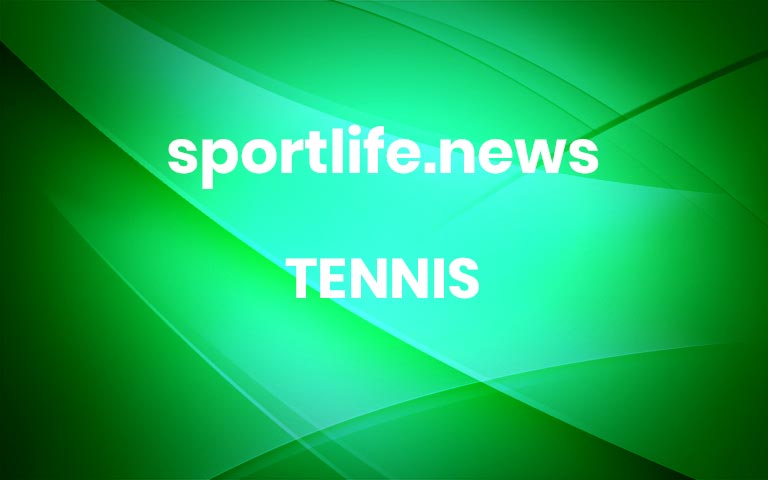Australian Open 2021: Novak Djokovic and Daniil Medvedev Meet for the Title
#masthead-section-label, #masthead-bar-one { display: none }The Australian OpenOsaka Wins TitleMen’s Final PreviewDjokovic’s RideWilliams’s Future?AdvertisementContinue reading the main storySupported byContinue reading the main storyAustralian Open 2021: Novak Djokovic and Daniil Medvedev Meet for the TitleDjokovic, aiming for his ninth title in the tournament, should face a strong challenge from Medvedev.Novak Djokovic in his semifinal victory over Aslan Karatsev.Credit…Dave Hunt/EPA, via ShutterstockFeb. 20, 2021, 7:08 a.m. ETHow to watch: The match is at 3:30 a.m. Eastern time on Sunday on ESPN, ESPN Deportes and ESPN+. There will be encore showings at 8 a.m. and 11 p.m. on ESPN2.The men’s singles final that will wrap up this year’s Australian Open is a battle between the standard-bearer Novak Djokovic and the worthiest challenger the field could have mustered, the surging Daniil Medvedev. Here’s what to watch for as the two face off:Medvedev is on a roll.Medvedev, 25, has put together a remarkable run in the past few months, reeling off a 20-match win streak that includes titles at the Paris Masters, the ATP Finals in London, and the ATP Cup in Melbourne. Twelve of those 20 wins came against top-10 opponents. He has beaten eight of the nine other players in the top 10; only Roger Federer, who has been out of competition for more than a year with knee problems, avoided a loss to Medvedev. Daniil Medvedev in his semifinal victory over Stefanos Tsitsipas.Credit…Patrick Hamilton/Agence France-Presse — Getty Images“For the confidence, when you beat everybody it’s just great, because I think people start maybe to be a little bit scared about you,” Medvedev said Friday after thrashing Stefanos Tsitsipas in the semifinals in Melbourne. “At the same time, sometimes there are going to be some that are going to want to beat you even more. It’s a tricky situation, but I’m happy I managed to be on top in all those 20 matches.”Djokovic is in his happy place.Though his name is not quite synonymous with this tournament in the way that Rafael Nadal’s has become with the French Open, Djokovic, 33, is the player of the century (so far) at the Australian Open. It was where he won his first Grand Slam title, in 2008, when he was only 20.Like Nadal in Paris, Djokovic is undefeated in finals in Melbourne, with an 8-0 record. If he wins on Sunday, Djokovic would sit alone in second place, behind Nadal and his 13 French Open titles, on the list of men’s singles championships won at a particular Grand Slam event. Djokovic is currently tied with Federer, who has eight Wimbledon singles championships.Djokovic’s dominance in Melbourne is not just about the surface: He has won only three titles at the United States Open, which is played on fairly similar hardcourts. Serbian fans supporting Djokovic in the semifinals.Credit…Daniel Pockett/Getty ImagesIn Melbourne, though, Djokovic gets strong support from a substantial local contingent of Serbian expatriates, whereas the crowds at the U.S. Open in New York often root against him.Medvedev has shown he can handle Djokovic.These days, Medvedev isn’t likely to be intimidated by anyone in tennis, and he has particular reasons to feel comfortable against Djokovic.Medvedev has won three of his seven previous meetings against Djokovic, including a semifinal at the Cincinnati Masters in 2019 on a fast hardcourt that played similarly to the courts in Melbourne this year.In the fourth round of the 2019 Australian Open, he lost to Djokovic, who received extra treatment because of all the exertion and contortion required to beat Medvedev.“It was hard to go through him,” Djokovic said that night. “It was kind of a cat-and-mouse game for most of the match — that’s why it was so lengthy. We had rallies of 40, 45 exchanges. That’s why I think it was physically exhausting, because of the fact that we didn’t really allow each other to think that we can make a lot of unforced errors and give away points.”In the third round this year at the Open, Djokovic sustained an abdominal injury in his match against Taylor Fritz. Djokovic initially spoke pessimistically about his chances of continuing in the tournament, but he has seemed less affected by the injury in each subsequent match, even as his right side remains heavily taped under his shirt.The rankings could be shaken up.To find the last final in which a male player claimed his first Grand Slam title against an older finalist who had already won one, you need to go back all the way to the 2009 United States Open, where Juan Martín del Potro beat Roger Federer. When Dominic Thiem won his first Grand Slam title at last year’s U.S. Open, he did it almost literally by default, after Djokovic had been disqualified from the tournament in the round of 16 when he swatted a stray ball in frustration and hit a lineswoman in the throat.A Medvedev victory, however, could represent a genuine shift. If he defeats Djokovic, he will rise to the No. 2 spot in the world rankings. It would be the first time since Lleyton Hewitt reached No. 2 in July 2005 that anyone but Djokovic, Nadal, Federer or Andy Murray was ranked in the top two.AdvertisementContinue reading the main story More


